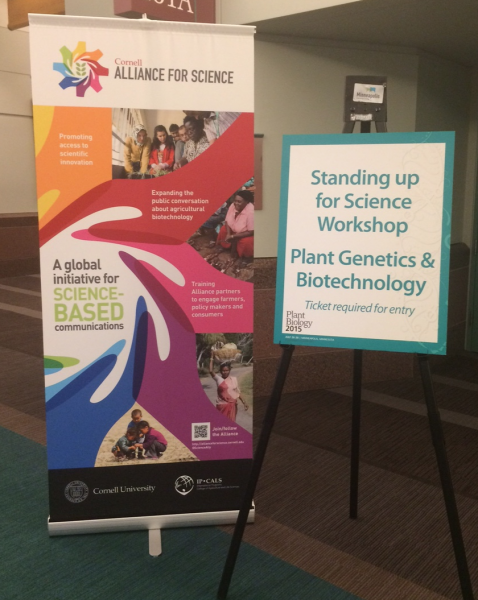
Following the American Society for Plant Biology (ASPB) 2015 annual meeting in Minneapolis, MN, Sense About Science USA, the Cornell Alliance for Science, and the Boyce Thompson Institute (BTI) co-sponsored a Voice of Young Scientists Standing Up for Science communication workshop on plant biotechnology. The event, held on July 30, attracted about twenty young scientists from the US and around the world.
We have to remember history, Sense About Science USA Deputy Director, Neda Afsarmanesh reminded the group. The history of science puts scientists at odds sometimes. There s a historical reason for some of the distrust in science, and it s important to remember that. Science communication strategies are needed to help navigate this divide.
To discuss such strategies, workshop participants were treated to three interactive panel discussions, one featuring scientists, the second journalists, and the third, a nuts and bolts group of scientists actively engaged with the public outside of the laboratory.
UC Davis plant biologist, Douglas Cook and University of Nebraska-Lincoln plant scientist, Sally Mackenzie and President elect of ASPB addressed their experience as scientists interested in sharing their work in public forums. For Mackenzie, The more scientists are willing and feel confident to give talks to the public, and the more we [scientists] act as a community and start sharing our information is key to science communication. People need to hear the argument more than once to shift their value system.
Cook pushed back, however, suggesting that educating the public about scientific facts will not make them believe the argument. I don t try to give [naysayers] facts, Cook said. I ask about values. They re not thinking about the science.
In session two, freelance journalist Emily Sohn and radio journalist Elizabeth Dunbar (Minnesota Public Radio) provided an inside look at what it takes to turn a scientist s work into a compelling narrative. Very rarely does the end product of a story mirror the scientists expectations, but better understanding the role of a journalist can help ease the process. Sohn suggests not only attending communications workshops such as this, but also picking up a copy of the tools designed to train science journalists themselves such as the popular The Science Writers Handbook.
And finally, session three featured a variety of scientist-communicators, including Natalie Henkhaus (BTI), Karl Haro von Mogel (Biology Fortified), and Eric Hamilton (AAAS Mass Media Fellow). The panelists discussed the many ways as Hamilton recognized that journalism and science are inherently similar processes of asking questions, conducting background research, analyzing data, and telling a story.
What it comes down to, however, as Haro von Mogel summarized best: I love science. I love doing science. And I also love talking about science.
